Storage System Problems
Storing aluminum Christmas trees in the off-season is an important facet of curating. Attic storage can be too hot, and basement storage, too damp. Over the course of its life, however, many trees spend some time in either or both of these spaces. As a result, the original storage systems become compromised. Additionally, wear and tear can result from moving, stacking, packing and unpacking. Not every tree owner saw these novelty products as a long-term commitment! Here we explore some of the most common issues with storage systems, and how to mitigate any further damage or deterioration.
Original box has lost its integrity
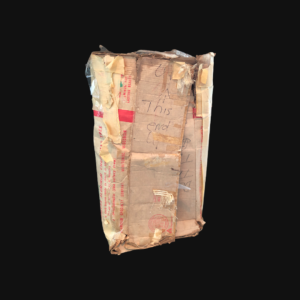
Smashed and trashed.
Boxes are everything to the serious collector. Most especially with the rarer trees, the box surpasses its original functional purpose by offering information for cataloging purposes. The larger Revlis boxes are notorious for being weakened over time. They simply were not constructed to withstand years of containing a very heavy Revlis. Earnest collectors even delight in the study of original shipping labels for trivial tidbits. Always, always, always save the box, even if you do not store the tree in it. In the case of a damaged box, the less it is addressed, the better it is for resale value, even if it is in pieces. New tape over original graphics is a disappointment to collectors. If you must re-attach a box flap or shore up a corner, the best approach is to apply the tape on the inside of the box panels using paper tape that best matches. If you want to avoid using tape on the original cardboard, hook-and-loop strips may be used to hold the box together. Stretch film is great for shipping or long-term storage. Another approach is to place the entire box in a large plastic bag and tape the bag securely around the box. This method works great for shipping!
Original storage pallet is missing
This applies to Revlis, Stainless Metal Craft, Tomar and Holi-Gay trees, which were originally packaged with a pallet storage system. It is also a good replacement storage system for trees such as Regal and Mirro, which were packed with branches banded in groups. A replacement pallet can be made, and although time consuming, it is not difficult to craft. Instructional video coming soon!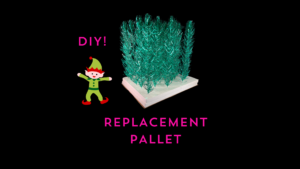
Branch sleeves are brittle, ripped, or otherwise compromised
If the tree might ever be re-sold, by all means save the sleeves in any condition. However, if the sleeves are damaged to the extent that they are not protecting the branches, replacement sleeves are in order. There are online resources for ordering replacement sleeves. Carefully choose the length and width of the sleeve to match with branches.
Honeycombs are not your friend

The usual state of a honeycomb after decades of use.
Honeycomb storage systems were intended to be innovative, but are actually not a champion to the branches they were designed to store and protect. Over time, honeycombs do more harm than good. The very best way to preserve a tree is to save the honeycomb, but buy appropriately-sized aftermarket sleeves to protect the branches. Yes, it adds bulk to storage but this method can really have a measured effect on protecting a tree. Carey McFall, Consolidated Novelty, and Fairyland all used the honeycomb systems. To add another level of difficulty, Consolidated Novelty adhered the honeycomb inside the box. This photo of a Consolidated Novelty storage system is in as pristine a state as can be found. Looks like a great thing, but no.
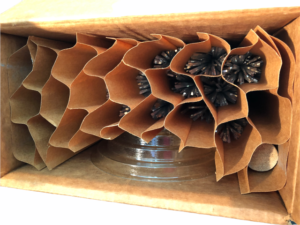
Branch sags when inserted into the pole hole
This problem is less common, and the hack is straightforward. If you encounter a routed-out hole, simply employ a drill to deepen the hole just a tad. Be as precise as possible in matching the drill bit to the hole size. Easy fix.
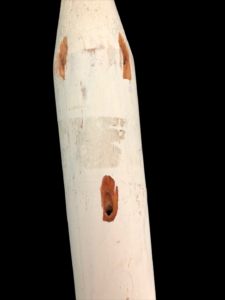
Routed Out Hole
Preventing damage to poles
After 60+ years, some wooden poles become dry and are vulnerable to damage. Even the best stored poles can be marred by assembly. The very best solution is an aftermarket (but still vintage) stand that features an elongated collar, or sleeve, to stabilize the pole. A further protective step is to wrap the pole in felt when inserting into the stand.
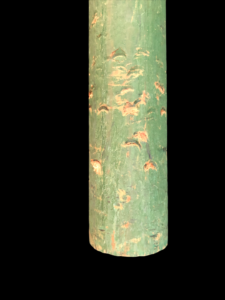
Scarred Pole Large
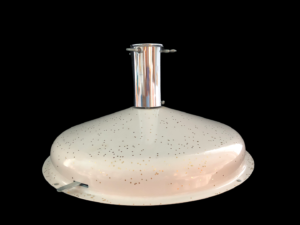
Cameo Turner

